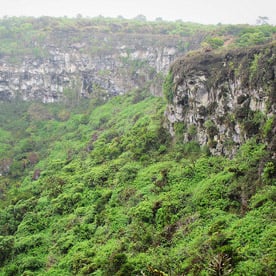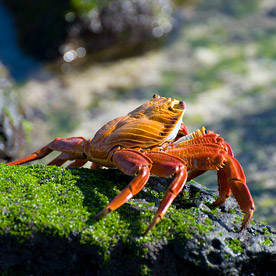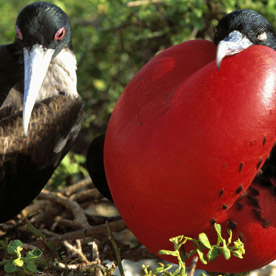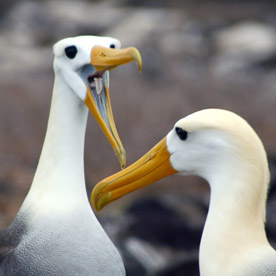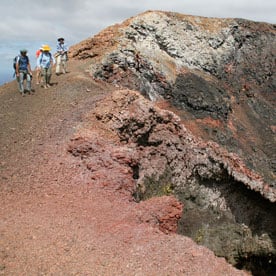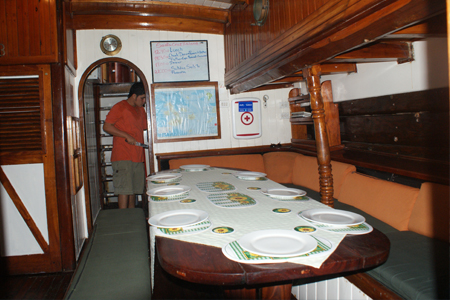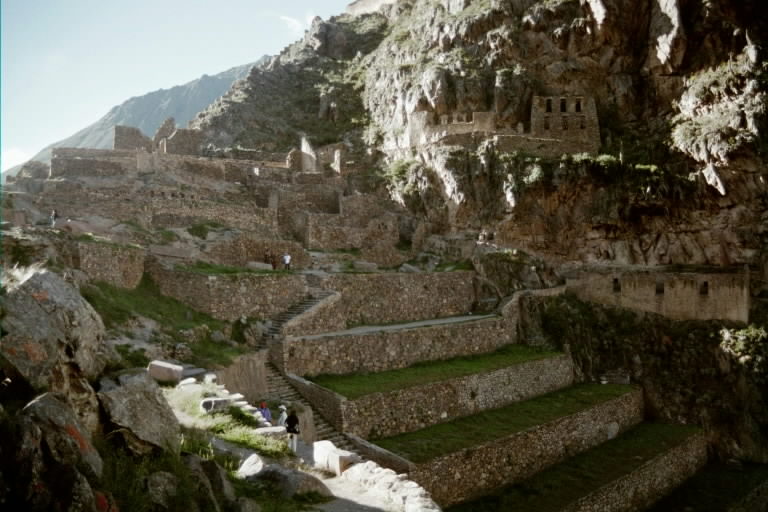2 nights
Casa Hood Restaurant
Terminal Terrestre, GYE bus terminal
Direct bus CLP (Compania Libertad Peninsular): $5.60
2140 975 2780 - 213
GYE - Montañita (2.5hr): 5, 9, 1, 3, 4:30 or via Santa Elena every 15min
Montañita - GYE: 4:45, 5:15, 9:45, 12:45, 2:45, 4:45GUYAQUIL
1/1 nights
Malecon 2000, waterfront
Cerro Santa Anna
Calle Numa Pompillo
Lighthouse (10-10pm)
MANGLARES CHURUTE ECOLOGICAL RESERVE ($70 Mangrove tour, canoeing)
Encebollado
Calle Numa Pompillo
Lighthouse (10-10pm)
MANGLARES CHURUTE ECOLOGICAL RESERVE ($70 Mangrove tour, canoeing)
Encebollado
Encebollado is a popular dish from Ecuador. While it originates from the coast, it is popular around the whole country due to restaurants featuring the region's cuisine. It is a type of soup made of albacora (a type of tuna), yuca (cassava) , tomatoes and onions and generally sprinkled with lemon juice. In the coast, it can be found in restaurants called Picanterías.
cangrejo criollo
Caldo de bollo
cangrejo criollo
Caldo de bollo
Manso Boutique -Amber Room ($92, wifi/breakfast)
GALAPAGOS
7 nights - Sulidae
____________________________________________
TUE AM
Santa Cruz Island: Charles Darwin Station
Arrival to Baltra Airport.
Arrival to Baltra Airport.
TUE PM
Santa Cruz Island: Los Gemelos
Spanish for The Twins, they are two volcanic depressions on the highest part of Santa Cruz.
Spanish for The Twins, they are two volcanic depressions on the highest part of Santa Cruz.
Los Gemelos, or the Twin Craters, are located opposite each other on both sides of the road leading from Puerto Ayora to Baltra. The name is only figurative; Not real craters, these formations were created by the collapse of surface material in underground fissures and chambers. The view is breathtaking.
| Highlights: | Pit craters, Scalesia Forest |
| Activities: | Short hiking |
| Type of Landing: | Dry landing |
| Difficulty: | Moderate |
WED AM
Bartholomew Island
Visit the Pinnacle Rock and the white-sand beach: the best area to get photos of Galápagos penguins.
Visit the Pinnacle Rock and the white-sand beach: the best area to get photos of Galápagos penguins.
Home of the famous Pinnacle Rock, Bartholomew consists of an extinct volcano with a variety of red, orange, black and even green volcanic formations. A trail of stairs leads to the summit of the volcano, boasting one o the best views of the islands. The beach is perfect for snorkeling and possible sightings of the Galapagos Penguin.
| Highlights: | Pinnacle rock, panoramic view, moonlike landscape, penguins, pioneer plants, lava cactus; snorkeling: penguins, reef sharks, rays, and great colorful fish. |
| Activities: | Dinghy ride, snorkeling & hiking (1.25 mi/ 2km) |
| Type of Landing: | Dry and wet landings |
| Difficulty: | Moderate/difficult. Walk up to the top of volcano 114 meters, 375 wooden steps |
WED PM
Santiago Island: Sullivan Bay
The lava field has a variety of patterns made by the shapes and textures of trees that once existed there.
The lava field has a variety of patterns made by the shapes and textures of trees that once existed there.
____________________________________________
THU AM
THU AM
Santa Cruz Island: Bachas Beach
A swimming beach and one of the few remnants of the U.S. World War II presence in the Galápagos
Las Bachas Beach is located at the northeastern coast of Santa Cruz. Its name comes from that in English means barge barge. It is the most important beach for the animation of sea turtles, flamingos and migratory birds and lapwings patillos real. Its crystal waters invite you to relax and swim or sunbathe. The sand at Las Bachas is made of decomposed coral, which makes it white and soft, and a favorite site for nesting sea turtles. The Sally Lightfoot crabs are abundant on the lava rocks along the water's edge. These crabs will eat anything they can get their claws on. On this hike, we saw flamingoes, Sally Lightfoot crabs, hermit crabs, black necked stilts, and whimbrels. The sea turtles had already abandoned their nests.
A swimming beach and one of the few remnants of the U.S. World War II presence in the Galápagos
Las Bachas Beach is located at the northeastern coast of Santa Cruz. Its name comes from that in English means barge barge. It is the most important beach for the animation of sea turtles, flamingos and migratory birds and lapwings patillos real. Its crystal waters invite you to relax and swim or sunbathe. The sand at Las Bachas is made of decomposed coral, which makes it white and soft, and a favorite site for nesting sea turtles. The Sally Lightfoot crabs are abundant on the lava rocks along the water's edge. These crabs will eat anything they can get their claws on. On this hike, we saw flamingoes, Sally Lightfoot crabs, hermit crabs, black necked stilts, and whimbrels. The sea turtles had already abandoned their nests.
THU PM
North Seymour Island
Explore the rocky coast, passing colonies of blue-footed boobies and magnificent frigatebirds.
Explore the rocky coast, passing colonies of blue-footed boobies and magnificent frigatebirds.
Galapagos Sea Lions, Blue-footed Boobies and Magnificent Frigatebirds are abundant on North Seymour Island. The island was formed by a series of submarine lavas containing layers of sediment that were uplifted by tectonic activity. The island is characterized by its arid vegetation zone.
| Highlights: | Land & marine iguanas, frigatebirds, Blue-footed Boobies, sea lions; snorkeling: Rays, reef sharks, fish, garden eels. |
| Activities: | Snorkeling, dinghy ride & hiking (1.5 mi/2.5 km) |
| Type of Landing: | Dry landing |
| Difficulty: | Moderate/difficult |
____________________________________________
FRI AM
FRI AM
San Cristobal Island: Interpretation Center
A series of interactive exhibits providing information about the history and biodiversity of the Galápagos.
A series of interactive exhibits providing information about the history and biodiversity of the Galápagos.
San Cristobal is home to a small town, Puerto Baquerizo Moreno, and the Junco Lagoon, located 700 meters above sea level. El Junco has been the object of a study in which the sediments on the bottom of the lake were analyzed to uncover information about the vegetation and climate of the archipelago thousands of years ago.
FRI PM
after the lunch, we will visit Playa Ochoa you will have contact with families of sea lions
____________________________________________
SAT AM
SAT AM
Española Island: Suárez Point
Suárez Point is one of the most outstanding wildlife areas of the archipelago.
Suárez Point is one of the most outstanding wildlife areas of the archipelago.
This area is great for spotting Blue-footed Boobies, albatrosses and Nazca Boobies. A beautiful site on the ocean front, the large Waved Albatrosses use the cliff as a launching pad. The famous attraction is the magnificent blowhole, spurting water high into the air. This site presents wonderful photograph opportunities.
| Highlights: | Hood Mockingbird, Nazca Boobies, Waved Albatross, Red-billed tropicbirds, lava lizards, Galapagos Hawk, Blue-footed Boobies, blow hole, amazing landscape |
| Activities: | Hike (1.9 mi/3 km) |
| Type of Landing: | Dry Landing |
| Difficulty: | Difficult |
SAT PM
 Española Island: Gardner Bay
Española Island: Gardner BayGardner Bay has a magnificent beach with turquoise waters. The bay is home of a large colony of sea lions.
Gardner Bay, on the eastern side of the island, is the breeding site of nearly all of the world´s 12,000 pairs of Waved Albatrosses. It has an ample white sandy beach with a myriad of sea lions, perfect for relaxing. Its rocky shores make this site a great place for diving and snorkeling.
| Highlights: | White sandy beach, sea lions, mockingbirds; snorkeling: colorful fish, sea lion nursery |
| Activities: | Snorkeling, dinghy ride, kayaking, short hike of (0.6 mi/1 km) |
| Type of Landing: | Wet landing |
| Difficulty: | Easy |
____________________________________________
SUN AM
SUN AM
 Floreana: Cormorant Point & Devil's Crown
Floreana: Cormorant Point & Devil's CrownA saltwater lagoon favourite of flamingos plus the Galapagos' best snorkelling site.
One of the best snorkeling sites in the Galapagos, this volcanic crater has been eroded by the waves leaving the northern and southern sides poking out of the water. The coral reef in the middle is perfect for attracting marine life. Snorkelers enjoy the variety of marine life and exciting currents that rush through the crown, creating an exhilarating experience.
| Highlights: | The best snorkeling site in Galapagos Islands with sharks, rays, rock formations, lots of tropical fish. |
| Activities: | Snorkeling |
| Type of Landing: | No landing |
| Difficulty: | Moderate/difficult |
SUN PM
 Floreana Island: Post Office Bay
Floreana Island: Post Office BayA white-sand beach where in the past sailors used to leave and receive their letters in a barrel.
In the 18th century whalers passing through the islands placed a wooden barrel on Floreana Island for use as an unofficial mail box. The tradition continues today as visitors leave addressed postcards in the barrel and sort through left mail to deliver at home.
| Highlights: | Barrel Post Office, nice sandy beach |
| Activities: | Short hike (less than 0.6 mi/1 km) & snorkeling |
| Type of Landing: | Wet landing |
| Difficulty: | Easy |
____________________________________________
MON AM
The Sierra Negra like the other volcanoes on Isabela is believed to have been created from a mantle plume which has created the hotspot.
The Sierra Negra Volcano boasts the largest basaltic caldera in Galapagos at 9 x 10km. The site offers impressive views and the opportunity to observe up to 7 species of finch and a rich display of vegetation. The north side of the caldera provides evidence of its most recent volcanic activity in 2005.
| Highlights: | Basaltic caldera, stunning views, finches |
| Activities: | Hiking, horseback riding, walking |
| Type of Landing: | Dry landing |
| Difficulty: | Moderate |
MON PM
Isabella: Playa Arena
____________________________________________
TUE AM
Santa Cruz Island: Charles Darwin Station
An organisation that provides scientific assistance to ensure the proper preservation of the Galápagos. Transfer to the Airport.
The Charles Darwin Research Station is home to tortoises ranging from 3-inches (new hatchlings) to 4-feet long. Sub-species of tortoises interact with one another and many of the older tortoises are accustomed to humans, stretching out their heads for a photo opportunity. The babies are kept until they are about four years old and strong enough to survive on their own.
“Turtles” live in water and “tortoises” live on land. You cannot touch the tortoises (or any other animals) on Galapagos.
____________________________________________An organisation that provides scientific assistance to ensure the proper preservation of the Galápagos. Transfer to the Airport.
The Charles Darwin Research Station is home to tortoises ranging from 3-inches (new hatchlings) to 4-feet long. Sub-species of tortoises interact with one another and many of the older tortoises are accustomed to humans, stretching out their heads for a photo opportunity. The babies are kept until they are about four years old and strong enough to survive on their own.
“Turtles” live in water and “tortoises” live on land. You cannot touch the tortoises (or any other animals) on Galapagos.
Our lodging for the week!

Speed of 8 knots

4 crew + 1 guide
Kicker Rock
St. James Bay
Post Office Bay, Floreana
Swimming with hammerheads and white tipped reef sharks
Frigatebird
Fur Sea Lion
Lava Lizard
Marine Iguana
Swallow Tailed Gull
Galapagos Turtoise
Penguin
Blue Footed Booby
MACHU PICCHU
Frommers guidebook
train tix (visa only)
train ride photos
Gates: 5:30am
Bus: 6:15am, $6
Entrance: $50 (buy 5:15am-7pm in Aguas Calientes) (126 soles, exact change)
Huayna Picchu Gates: 7am (400 visitors max/day)
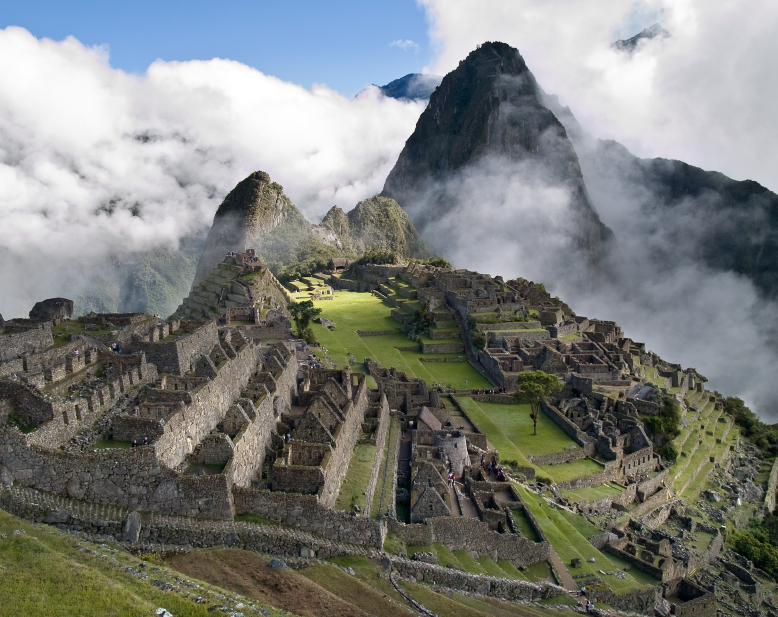
Putucusi, Aguas Calientes (2hr RT hike)
Quechua for “Happy Mountain”. Putucusi is on the same side of the river as Machu Picchu Pueblo. Follow the train tracks a very short distance away from town in the direction of Santa Teresa and Machu Picchu (downhill from town) you will shortly come across a trail on your right heading uphill. (If you come to a train tunnel, you've gone too far.) This trail leads to the summit, approximately 2370 meters above sea level. It is the mountain adjacent to Machu Picchu. The trail is steep with quite a few near-vertical wooden ladders. The elevation gain is about 300 meters from Machu Picchu Pueblo. The summit offers amazing views of Machu Picchu if it's a clear day. As of July 2010 portions of the vertical wooden ladders have been obscured by a mudslide and you are only able to reach the top of Putucusi by firmly hauling yourself up a steel cable (not recommended, unless you are an experienced rock climber). Allow about one hour each way and make sure you'll be out before it gets dark. Wear long pants to avoid insect bites and take some water.
Ollantaytambo
1 night Hotel Albergue ($50/nt wifi, sauna, luggage)
Continuously inhabited for more than 700 years, Ollantaytambo is one of the few settlements that 16th-century Spanish conquistadors had trouble sacking, thanks to its magnificently preserved Incan fortress (www.cosituc.gob.pe). Admission is 40 soles (about $13 at 3 soles to the dollar); a 140 sole ticket also includes access to 15 other archaeological sites in the area.
The steep footpath up Pinkuylluna, a hill that overlooks the town, leads to the ruins of food storage buildings and Tunupa, a rock visage named for an Aymara deity that watches over the village. The dizzying climb deters many visitors, leaving the site refreshingly free of crowds.
Moray S/15 (incl. Boleto Turistico)
CUSCO
2 nights
Cuzco area tours 2-6:30pm ($15)
all entrance fees to area parks Boleto Turistico $46
Raft/MT bike tour ($165)boleto turistico
Cuzco airport opens at 6am
Niños Hotel ($49/night, wifi, ALL profits feed/educate local street children) TA
Pisac Market (Tue, Thu, Sun are best)
Pisac ruins - hike up from Plaza, or $10 taxi
Sascayhuaman
hike up from Plaza de Armas (40min)
hike up from Plaza de Armas (40min)
TIPS
Diamox - altitude sickness
dramamine
Toilet paper/ wet wipes
water shoes for wet landings
hiking boots
itch cream
deet spray
hats, rain poncho
drybag
binoculars
Ecuador (120v)
Peru (220v)












